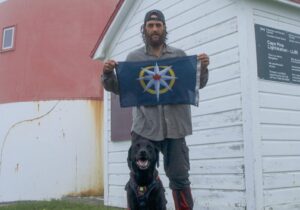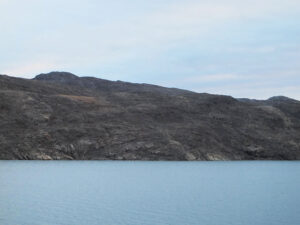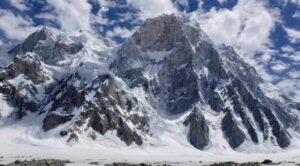A roundup of the most challenging unclimbed peaks in our solar system
The last big mountaineering “problem”, K2 in winter, has been solved. So, what’s next? New routes and unclimbed 6,000m peaks in the Pamirs not doing it for you? Perhaps you need to expand your horizons. Where are the best climbs in the solar system?
These mountains are certainly remote, but it’s your only chance to join the 21,000’er club. You will probably need supplementary oxygen for all of these.
Olympus Mons, Mars: 21,287m
Like Kilimanjaro on steroids

An overlay showing the size of Olympus Mons in relation to France. Photo: Sémhur/Wikimedia Commons
Olympus Mons is a colossal shield volcano on Mars. At 21,287m, it is the tallest planetary mountain discovered in our solar system. At two-and-a-half times Everest’s height above sea level, Olympus Mons dwarfs anything on earth.
But how do you measure height above sea level when there’s no ocean? A substitute reference value must be used, known as the Mars areoid. The Mars areoid “is an imaginary sphere with a centre that coincides with the center of Mars and a radius of 3,396,000 metres.” This gives us an altitude reference value despite the absence of oceans and Mars’ lumpy topography.
Climbing up from the Mars areoid would take quite some time. First, you’d need to clear the eight-kilometre high escarpment that rings the volcano’s outer edge — in itself, a climb the height of Everest. Then you’d set out on a very long hike towards the summit. Despite the elevation gain and provided you’ve somehow managed to get over the escarpment cliffs, the trek might not be too taxing. Olympus Mons is 600km wide with only a five-percent incline, so you’d be hard-pressed to recognize you were climbing a mountain. From a skier’s perspective, it’s a bunny hill, albeit a monumentally long one.
Skadi Mons, Venus: 10,972m
Big-wall climbing in an oven

A radar image of Skadi Mons from 1996. Photo: Magellan/NASA
There’s some potential for big-wall climbing on Venus. Skadi Mons in the Maxwell Montes massif features two distinct routes. You can choose to trek the gentle eastern slopes up from the plains of Fortuna Tessera, or you can test yourself on the steep western slopes.
It’s probably best to take some water, it’ll be hot work. Venus can top out at 471°C, which is enough to melt lead. The dense atmosphere traps heat and raises the surface pressure to around 90 times that of Earth. This is roughly equivalent to the pressure you would experience 1,000m underwater. You would essentially be climbing a mountain inside a blast-furnace while being crushed. On the plus side, if you made it to the upper slopes, you might get some metallic lead sulfide snow.
Rheasilvia Peak, Vesta: 22,530m
Climb down 19,000m to get to Base Camp

Pretty tricky to get a good image of Vesta. This photo was taken from 100,000km away by the Dawn space probe. Rheasilvia can be seen at the bottom of the asteroid. Photo: NASA
Vesta is the second-largest asteroid within a belt between the orbits of Jupiter and Mars. Its most prominent features are two humongous craters. Rheasilvia Peak is created by an impact rather than volcanic or tectonic activity. The crater that Rheasilvia calls home is over 19,000m deep, almost hiding the 22,530m mountain from view.
This would have to be a summer climb. Vesta can get up to a balmy -20°C with the sun overhead but can drop to as low as -190°C at night. Even the Polish Ice Warriors might have trouble with that.
Tenzing Montes (T2), Pluto: 6,276m
The ultimate ice climb?

A view of Pluto from the New Horizons space probe. The mountain range including T2 can be seen in the left foreground. Photo: NASA
Discovered in 2015 and named after Tenzing Norgay, T2 is an opportunity to beat the K2 crowds. Technically, it’s only a 6,000’er but it is 1,600m higher than Everest from base to peak.
Formerly regarded as the ninth planet in our solar system, Pluto has been relegated to the little leagues. This dwarf planet’s distance from the sun means that it gets mighty cold, dropping as low as -240°C. These freezing conditions make for a unique climb: T2 is a huge block of ice and you would start your ascent from plains that seem to be made of frozen nitrogen.
Gravity is roughly six percent of earth’s, so bounding up T2 is a possibility were you able to survive the thin, nitrogen-rich atmosphere.






